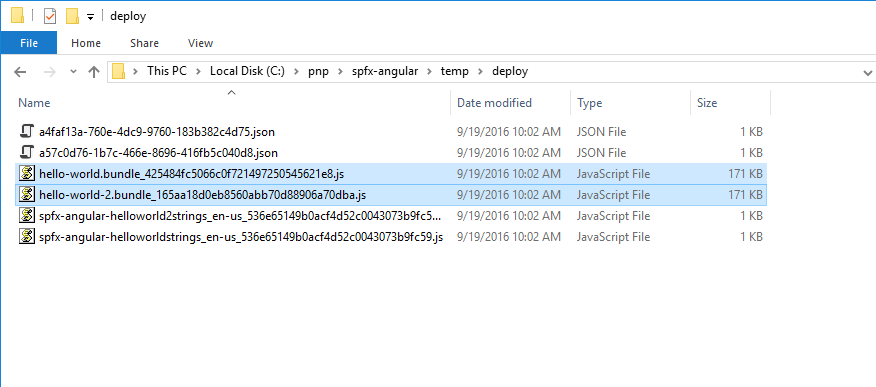Lodash Min Js Download File


Lodash React Native
Mapping JSON object with lodash. Browse other questions tagged jquery django lodash or ask your own. JavaScript/jQuery to download file via POST with JSON data. The download file lodash-master.zip has the following entries. Dist/lodash.underscore.min.js doc/README.md doc/parse.php index.js lodash.js package.json.
Contents.Using ES6 ModulesThe easiest way to add third-party libraries is to use ES6 Modules. A library, which is exported declaratively, could be loaded in a few straightforward steps.Let’s simulate this way by installing in our project: npm install lodashYay, Lodash is installed! - now let’s use it:Now that isEmpty is imported - we’re able to invoke that method. But what will happen when we import this method like that way in another file?
Will it be loaded twice?Basically, ES6 Modules are singletons. So, if a module is imported multiple times, we can be sure it will be evaluated and loaded into the bundle only once.In practice, we “cherry-picked” the isEmpty method of Lodash specifically in order to.Note: If you want to enable tree-shaking by Webpack - you should consider installing and importing the methods out of it (for instance: import isEmpty from 'lodash-es/isEmpty'). Global Scripts & StylesES6 Modules are a superb way to use third-party libraries. However, not all the third-party libraries support it, such as, and more.
Don’t be panic - Angular CLI provides a declarative way to handle these libraries through the.angular-cli.json file.To explain - let’s install Bootstrap 4 which is based on jQuery and: npm install jquerynpm install popper.jsnpm install bootstrap@nextPopper.js arrives with its typings file, thus we don’t have to install for it. Let’s install the other typings: npm install @types/jquery -save-devnpm install @types/bootstrap -save-devNote: We use typings modules for getting the desired autocomplete functionality in the IDE.As an additional step, we open tsconfig.app.json.
Then, we should add jQuery and Bootstrap to the types array so the TypeScript compiler will recognize those: 'types': 'jquery','bootstrap'All right, the libraries were installed - but now we’d like to figure out how to inject them. The first step will be to open to the.angular-cli.json file.Now, we should look for the injected scripts array and add the relevant files of jQuery, Popper.js and Bootstrap:In like manner, we’ll add the styles file of Bootstrap to the injected styles array:Well, what we did here, is to load the third-party’s scripts before that the Angular application starts to initialize. In fact, that’s the equivalent of injecting these files as scripts tags of index.html, which means these scripts are on the global scope or in other words - on the Window object. Just like that, the styles are injected as link tags.Here’s the result:Retrieving jQuery from the global scope External AssetsSo far we examined adding of third-party libraries using ES6 Modules and global sources. Our mission now is to add a third-party library that includes some additional resources.is a perfect choice.

Lodash Npm
Let’s install it: npm install open-iconicLike before, we should navigate to.angular-cli.json file and find the injected assets. But, suppose we want to inject all the SVGs which are provided by that third-party - by now, we injected each file specifically.
So, how should we do that?One option on the table is copying of the SVGs directory into our codebase manually. However, we don’t want to mingle with an external code. Against that - Angular CLI supports injecting of external assets using.Here’s the way to inject the whole directory:It means that all SVGs are available to be bundled and served as part of assets - we just have to access it.Take an example that uses a specific SVG:Using a specific SVG RecapWe introduced three different use-cases for adding a third-party library into our Angular CLI project: ES6 Modules, scripts & styles on the global scope and importing of external assets.The sample project is available.If you like this information and find it interesting or useful - share it 👉.
Lodash-es
NoteLibMan only supports one version of each library from each provider. The libman.json file fails schema validation if it contains two libraries with the same library name for a given provider. Restore library filesTo restore library files from within Visual Studio, there must be a valid libman.json file in the project root. Restored files are placed in the project at the location specified for each library.Library files can be restored in an ASP.NET Core project in two ways:.Restore files during buildLibMan can restore the defined library files as part of the build process. By default, the restore-on-build behavior is disabled.To enable and test the restore-on-build behavior:.Right-click libman.json in Solution Explorer and select Enable Restore Client-Side Libraries on Build from the context menu.Click the Yes button when prompted to install a NuGet package. The NuGet package is added to the project:.Build the project to confirm LibMan file restoration occurs.